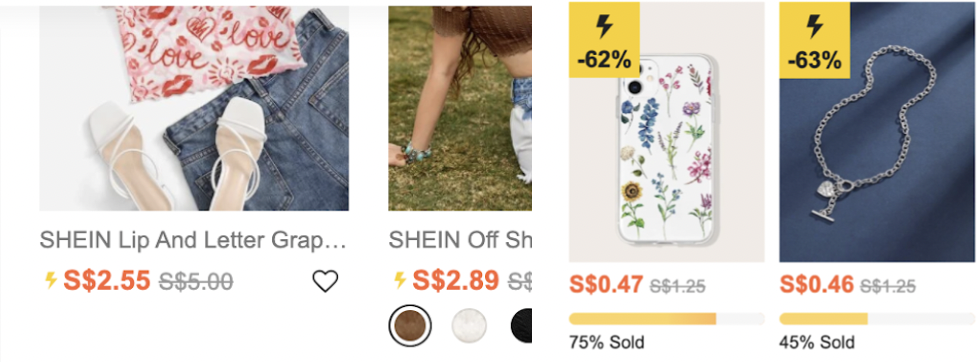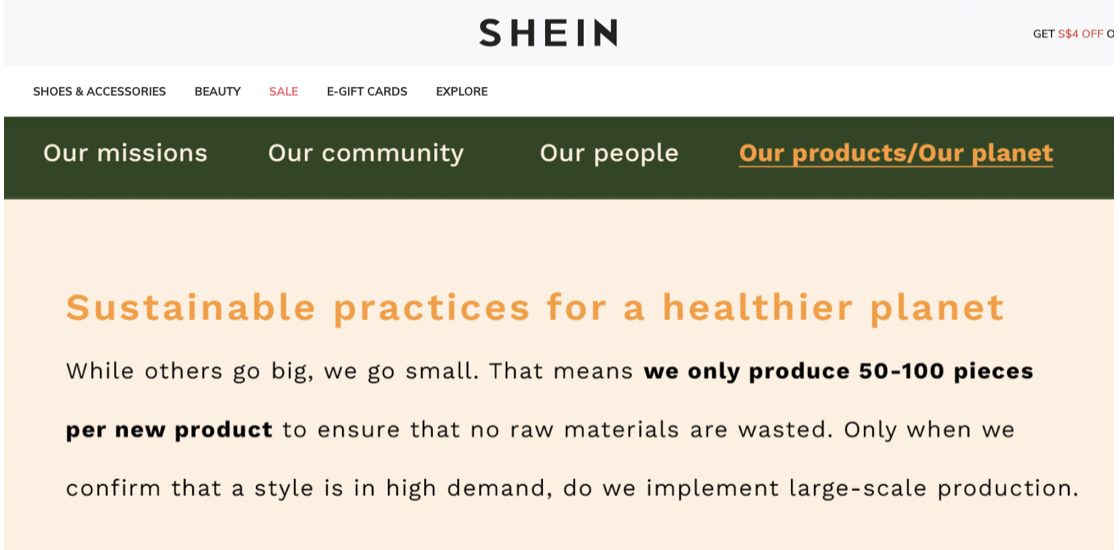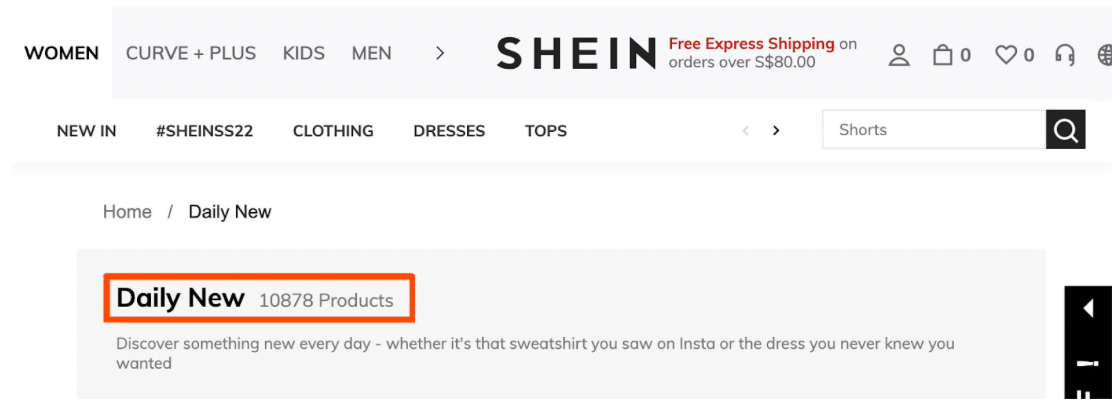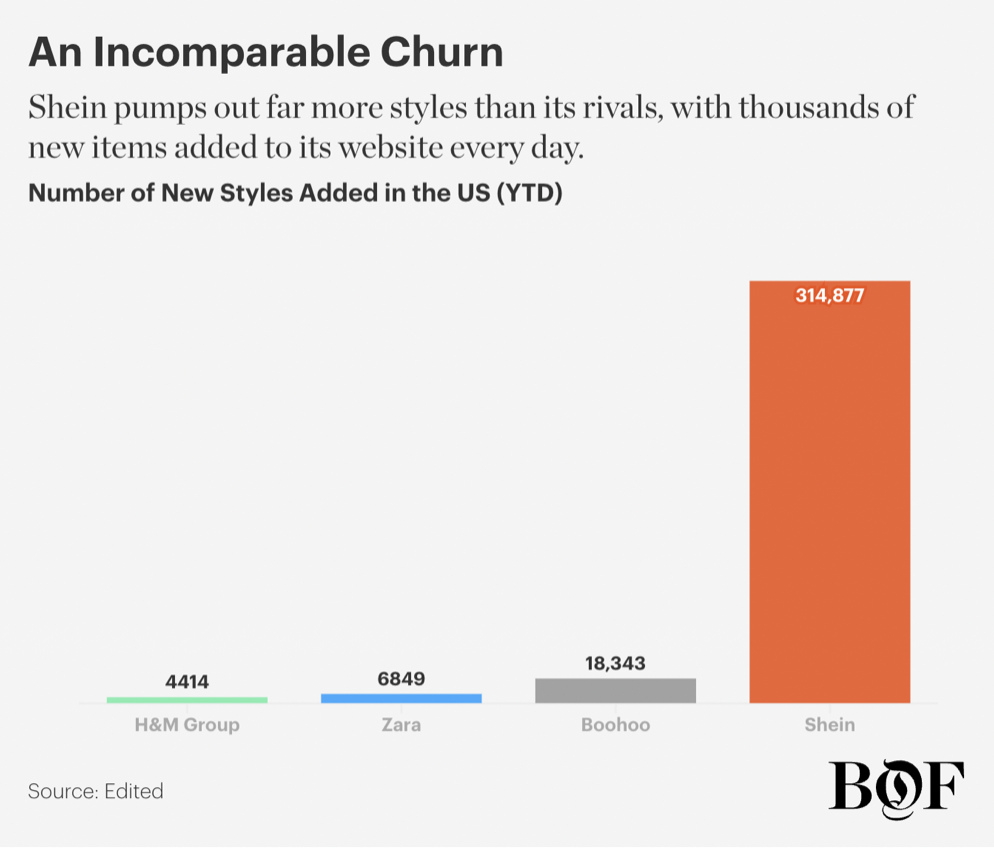Commentary: In collaboration with MothershiponEarth, sustainability advocate Audrey Yang co-writes why people should pay more attention to the carbon footprint of fast fashion companies like SHEIN and carefully consider our purchases as consumers.
Yang shares fine, broad resources on low-impact living on her Instagram @thisisaudsomee and manages another Instagram page (@a.tiny.warrior) with topical deep dives on climate, social and wildlife topics from a Singaporean lens.
If you are part of Gen Z or a TikTok user, you would have heard of SHEIN — an international online fashion giant offering cheap and trendy apparel and accessories.
To provide a sense of how large its user base is, SHEIN’s app has surpassed Amazon as the most downloaded shopping app in the U.S. They have overtaken H&M and Zara to become the largest fast fashion retailer by sales.
The brand, though founded in China, sells exclusively outside of China, and they recently made news for locating their headquarters to Singapore.
My first encounter with the brand was when its ad popped up on an app in mid-2021. At that time, I had never heard of them and did not think much about them. Weeks later, their posters were all over bus stops, MRT stations, on my devices – basically, everywhere I looked.
 Image by Audrey Yang.
Image by Audrey Yang.
One of the biggest fast fashion brands in the world now
SHEIN was reported to have made a whopping US$15.7 billion (S$21.5 billion) in revenue in 2021.
Most recently, the company was also valued at US$100 billion, making it worth as much as Zara and H&M combined, Bloomberg reported.
A key reason for SHEIN's meteoric rise is how cheaply the items are priced on their website.
Prices are as low as S$0.46 for a necklace and S$2.55 for a top.
 via SHEIN website.
via SHEIN website.
Free shipping, first-time purchase discounts and sales are common tactics used by retailers to entice hesitant customers into making their purchases — SHEIN is no exception.
 via SHEIN Singapore's website (March 2022)
via SHEIN Singapore's website (March 2022)
 via SHEIN Singapore's website (April 2022)
via SHEIN Singapore's website (April 2022)
SHEIN was ranked “the most manipulative fast fashion brand” by digital agency Rouge Media which scrutinised the websites of the 30 biggest fast fashion retailers in the United Kingdom.
The study recorded SHEIN for using the most amount of “tricks” to hook shoppers and manipulate them into spending more.
These tactics include flash sales with countdowns, discounts, free gifts and even “casino-style games” where users can earn points that translate to discounts. These games have a limited number of plays per day.
To play again, one has to complete tasks that extend your browsing time and encourage you to make a purchase.
In the same study, H&M was ranked number 18, Zara number 26, and Uniqlo number 30.
 via thetimes.co.uk
via thetimes.co.uk
SHEIN’s business model sustainable or sus?
SHEIN’s business model taps on real-time searches, where consumer data is constantly gathered and analysed to help determine what is in trend before the company makes production decisions.
Established relationships with manufacturers allow SHEIN to produce lower minimum quantities at a rate faster than their competitors. This way, they are able to shorten the time taken from design to production from several weeks to three days.
Their business model can be good for the planet, SHEIN claims.
If a brand is able to accurately predict demand and produce just enough to match that demand, imagine the amount of time, money and resources that can be saved.

That said, SHEIN is reported to produce over 10,000 new items daily.

Adding on to that, only six per cent of their inventory remains in stock for more than 90 days, according to a recent Guardian article.
SHEIN has also made returns easy for their customers, taking back most items in new condition within 30 days of receipt, according to their website. The same Guardian article suggested that the returns are more likely to go to the landfill than back to the inventory as doing the latter costs more.
While SHEIN’s 2021 Sustainability & Social Impact Report made a small mention about donation programmes that serve to direct returns away from landfill, little details were revealed.
SHEIN’s business model and marketing strategies sure make business sense, but do we really get a “healthier planet” from how fast fashion retailers like SHEIN run their business?
“They are not the only ones.”
As someone who has openly spoken about the way SHEIN operates, I get comments like “They are not the only ones.”.
First of all, highlighting SHEIN’s issues does not dismiss other problems in the fast fashion industry.
Secondly, just because they are not the only ones with questionable practices, does not mean they can be excused.
Lastly, those who make such comments should take into consideration the scale at which SHEIN is operating and its impact compared to other fast fashion brands.
If we are only looking at the level of production, this is how SHEIN compares to big players like the H&M Group (which includes H&M, COS, Monki and several other brands), Zara and Boohoo.
 Chart via Business of Fashion.
Chart via Business of Fashion.
SHEIN makes these giants, that have been called out for years over their business practices and waste, look insignificant.
Fueling our throwaway culture
When things get as cheap as what you can find on SHEIN, there is a risk of more waste being produced.
Some of us may throw them away more mindlessly once a trend is over or because the clothes are taking up too much space in the wardrobe.
Trendy clothes rarely live out their lifespan, and it is probably not in most fast fashion brands’ interest to make things last for consumers.
In Singapore, unwanted clothing is usually donated to charities.
The Salvation Army receives about 10 tonnes of donations on a regular day, and a significant portion of it is clothing — some with tags still on.
Alternative places to donate clothing are sprouting up around the country, from collection booths in fast fashion stores to thrift shops and swap shops.
However, the cycle of buying and donating does not solve the problem of overconsumption.
How SHEIN affects local businesses, our perception of the value of fashion and shopping culture?
With a growing momentum to go green, SHEIN is a force to be reckoned with it shaping how one values clothes and the kind of lifestyle that future generations subscribe to.
A survey done in 2019 found that Singaporeans are open to sustainable fashion but would not pay more for it.
Driving the sustainability movement is already an uphill battle. Consumers tend to think that “sustainability” is an expensive lifestyle when it really is about buying less and making things last.
Being sustainable is also about treating the items you already own with care and making mindful purchases.
People could get used to brand new clothing being priced at S$2 and necklaces at S$0.46, and it becomes an expectation which affects local businesses, whether they are operating sustainably or not.
Local businesses, much smaller than fast fashion giants, will not be able to price their products as competitively as them, but they would have a lower social and environmental impact.
Businesses that produce in small batches or numbers of clothing, do responsible and ethical sourcing and pay their workers fairly would face greater challenges.
Our secondhand clothing industry would also take a hit.
Thrift shopping has taken off in popularity in recent years, and it has always been common for preloved clothing to be resold online. However, when it is so cheap to buy brand new clothing, there is little incentive for one to purchase a used one.
I shudder to think about thrift stores and swap shops filled with racks and racks of fast-fashion discards, that it would permeate the spaces where people are genuinely pushing for circularity and mindful consumption in the fashion scene.
The joy of finding something unique in stores may also just disappear.
Greater transparency is a start
For the first time, SHEIN was included in the Fashion Transparency Index in 2021.
This is an annual review of the global top 250 fashion brands and retailers conducted by Fashion Revolution and Ethical Consumer in the UK to push brands to be more transparent about the way they operate. Only brands with an annual turnover of over £400 million (S$566 million) are included in this index.
The index ranks companies according to their level of transparency based on a questionnaire and publicly available information about supply chain issues.
SHEIN did not answer the questionnaire and had an average score of zero to five per cent in the index. Billabong, Roxy, Quiksilver, Tory Burch and Tom Ford were also brands that fell under this category.
Having these fast fashion businesses to become more transparent with how they operate and their supply chains may be a start to hold them accountable to the environmental impact that they create.
Earlier this year in New York, a Fashion Transparency Act was proposed. If passed, this law will “require companies to perform mandatory due diligence to identify, prevent, mitigate and account for actual and potential adverse social and environmental impacts in their supply chain".
In Germany, a supply chain due diligence law will come into effect from January 2023. Companies of a certain size will be required to identify, eliminate or minimise human and environmental risks in their supply chains. This also applies to foreign companies that operate in Germany.
We do not have anything similar in place in Singapore yet.
The fashion industry here in Singapore is largely unregulated when it comes to sustainability.
As consumers, let’s buy only what we need, clothes included
For us consumers, some of us may have severely underestimated how pollutive the fashion industry is.
The fashion industry actually has higher carbon emissions than the aviation and maritime industry combined, and it has a huge impact on other industries due to its extremely long supply chain.
The fashion industry deals with plant agriculture, animal agriculture, forestry and the petrochemical industry for the raw materials.
Not to mention manufacturing, packaging, and logistics. It goes far beyond “just clothes”.
While you could be cutting down on single-use plastic bags or straws, you could be furiously buying plastic in the form of clothing.
An article from Bloomberg shared that polyester has overtaken cotton in the 21st century as the go-to material for the fashion industry. They collected data on more than 15,000 pieces of clothing listed on SHEIN’s website and found that 95.2 per cent of their clothing contains new plastic.
This goes to show how the fashion industry affects us in more ways than we think and why we should carefully consider our purchases, instead of buying when it’s cheap.
The sustainability movement is playing catch-up with industry giants that have more power in driving the narrative.
As more consumers become interested in making better choices, more brands are jumping onto the sustainability bandwagon.
It's important for consumers to learn how to discern if a brand is greenwashing, or if they are creating meaningful change in the way they do business.
Top image screenshot via SHEIN.
If you like what you read, follow us on Facebook, Instagram, Twitter and Telegram to get the latest updates.

